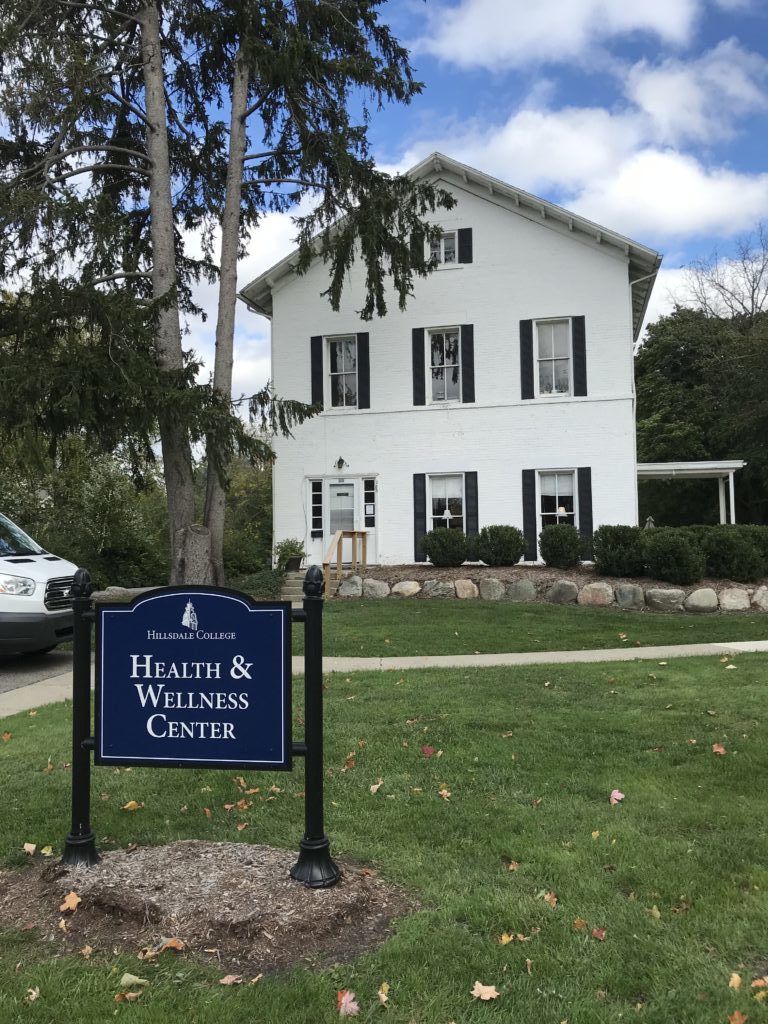
Both Hillsdale College and the nation have seen a big drop in cases of COVID-19 in recent weeks.
On Jan. 8, the nation had its highest number of diagnosed cases: 315,115. Since then, the number of new cases has plummeted. March 14 had a total of 40,358 new cases—the lowest in more than five months.
“COVID-19 is in retreat in America,” writes Derek Thompson of The Atlantic. “New daily cases have plunged, and hospitalizations are down almost 50 percent in the past month.”
Hillsdale County’s situation has seen a similar improvement. According to Centers for Disease Control and Prevention data, since Feb. 1, daily new cases have not risen above 18. Along with that, the county has not had more than one COVID-19-related death on a single day since Jan. 14. The total number of COVID-related deaths sits at 78, with only two coming in the last two weeks
Rachel Lott, Hillsdale Hospital’s director of marketing and development, said hospitalizations have accordingly dropped significantly since their peak in mid-December.
“We can’t say exactly what has caused the decrease in new cases, but we are certainly encouraged to see declining numbers. The decrease in new cases is likely due to a combination of factors, which include individuals following recommended public health precautions, and getting vaccinated,” Lott said. “We are fortunate to see fewer and fewer COVID-19 deaths in our community, and are optimistic that this trend will continue.”
Campus has experienced a bounceback as well. There has not been an active positive case on campus since Mar. 8 and only one student is in quarantine due to contact with an individual who has tested positive for coronavirus. The College’s Director of Health Services, Brock Lutz, said this decrease is likely due to several factors.
“We had quite a spike in late fall and likely reached some level of herd immunity through those cases and those staff who have been vaccinated. Hillsdale Hospital and the local health department have collaborated to vaccinate thousands of people in Hillsdale County,” Lutz said. “Numbers have been steadily decreasing across the state since January. The athletic department is also administering hundreds of tests per week to the student athletes and isolating positive cases, which have been very few.”
Associate Professor of Biology Silas Johnson said he thinks these numbers can be deceiving.
“Just to be clear here, the college hasn’t had any positive cases confirmed by diagnostic testing. This is different than not having any positive cases at all,” Johnson said. “It is likely that some small number of students, faculty, staff, or others associated with the college have had SARS-CoV-2 infections over the past month, but they were not confirmed by diagnostic testing or reported to college health services.”
Regardless of how many active cases there are, the drop in cases both on campus and nationally is significant. But what accounts for this dramatic decrease?
The introduction of the COVID-19 vaccine, lockdown procedures, and partial immunity likely all play a role, Thompson argues. It could also be that the coronavirus was always going to decline during this time of year.
“Mask wearing, social distancing, and other virus-mitigating habits vary among states and countries. But COVID-19 is in retreat across North America and Europe. Since Jan. 1, daily cases are down 70 percent in the United Kingdom, 50 percent in Canada, and 30 percent in Portugal,” Thompson wrote in The Atlantic. “This raises the possibility that SARS-CoV-2, the virus that causes COVID-19, is seasonal. Last year, a meta-study of coronaviruses such as SARS-CoV-2 found that they typically peak in the Northern Hemisphere during the winter, with the most common peak months being January and February.”
Johnson, on the other hand, said it is likely due in large part to so many Americans being either vaccinated or having already had the virus.
“To date, approximately 30 million people in the U.S. have had confirmed SARS-CoV-2 infections. The true number of infections is likely three to four times higher, putting the total number of infections around 100 million,” Johnson said. “Also to date, approximately 85 million people in the U.S. have received at least one dose of the COVID-19 vaccine.”
As the college looks to stay COVID-free, reducing restrictions surrounding the virus continues to look more realistic, according to administrators.
“We will continue to collaborate with our local health department and Hillsdale Hospital for guidance in determining testing, isolation, and quarantine measures,” said Dean of Men Aaron Petersen. “We look forward to easing restrictions as we are able.”

